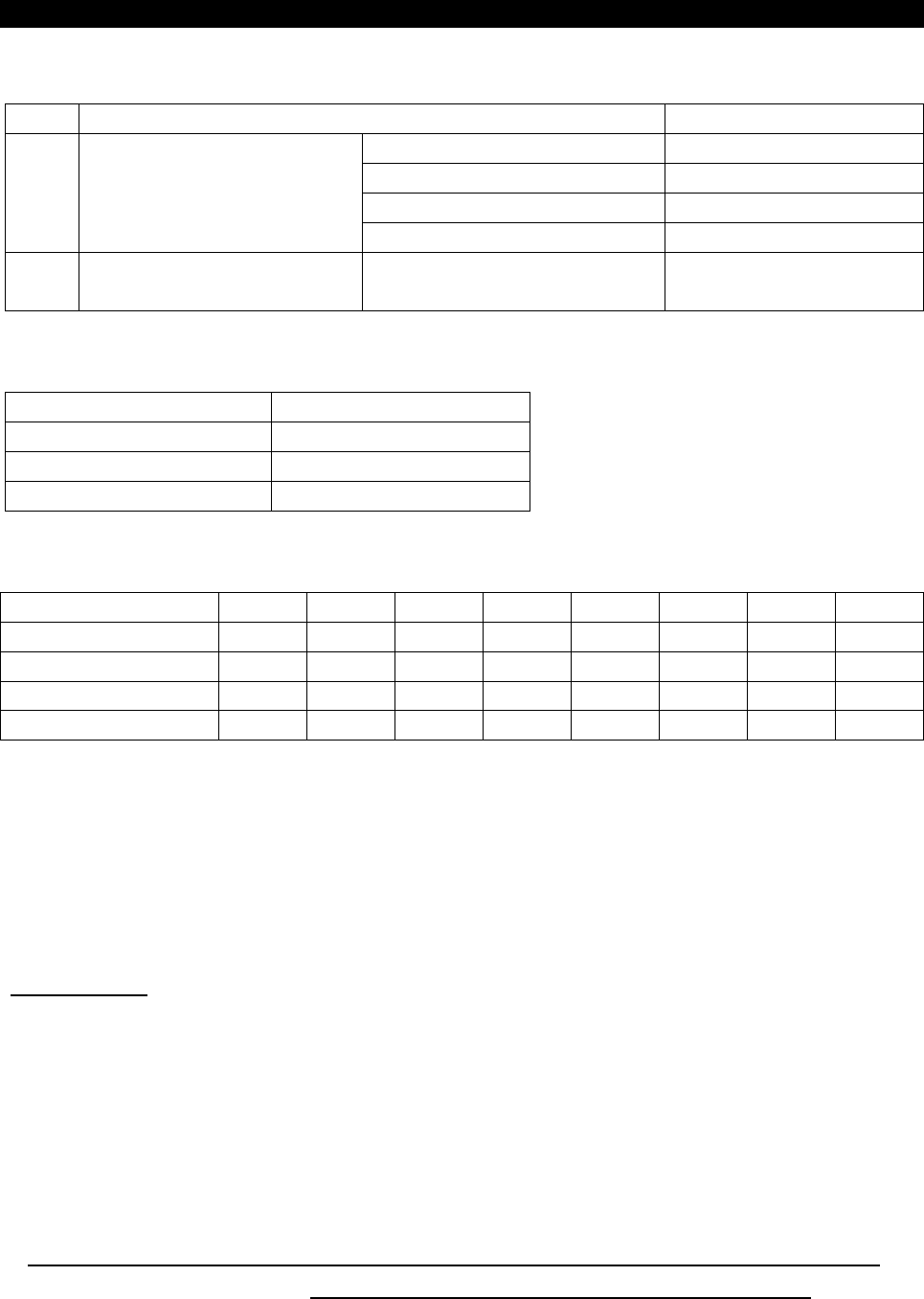
INSTALLATION AND WIRING
35
Table 2 Conversion Factors for FR-E500 Series
Class Circuit Type Conversion Factor (Ki)
Without reactor K31
=
3.4
With reactor (AC side) K32
=
1.8
With reactor (DC side) K33
=
1.8
3
3-phase bridge
(Capacitor-smoothed)
With reactors (AC, DC sides) K34
=
1.4
5 Self-exciting 3-phase bridge
When high power factor
converter is used
K5
=
0
Table 3 Equivalent Capacity Limits
Received Power Voltage Reference Capacity
6.6kV 50 kVA
22/33 kV 300 kVA
66kV or more 2000 kVA
Table 4 Harmonic Contents (Values at the fundamental current of 100%)
Reactor 5th 7th 11th 13th 17th 19th 23rd 25th
Not used 65 41 8.5 7.7 4.3 3.1 2.6 1.8
Used (AC side) 38 14.5 7.4 3.4 3.2 1.9 1.7 1.3
Used (DC side) 30 13 8.4 5.0 4.7 3.2 3.0 2.2
Used (AC, DC sides) 28 9.1 7.2 4.1 3.2 2.4 1.6 1.4
1) Calculation of equivalent capacity (P0) of harmonic generating equipment
The "equivalent capacity" is the capacity of a 6-pulse converter converted from the
capacity of consumer's harmonic generating equipment and is calculated with the
following equation. If the sum of equivalent capacities is higher than the limit in
Table 3, harmonics must be calculated with the following procedure:
P0
=Σ
(Ki
×
Pi) [kVA]
Ki : Conversion factor (refer to Table 2)
Pi : Rated capacity of harmonic
generating equipment* [kVA]
i : Number indicating the conversion
circuit type
*Rated capacity: Determined by the capacity
of the applied motor and found in Table 5. It
should be noted that the rated capacity
used here is used to calculate a generated
harmonic amount and is different from the
power supply capacity required for actual
inverter drive.
2) Calculation of outgoing harmonic current
Outgoing harmonic current = fundamental wave current (value converterd from received
power voltage)
×
operation ratio
×
harmonic content
•
Operation ratio: Operation ratio = actual load factor
×
operation time ratio
during 30 minutes
•
Harmonic content: Found in Table 4.


















